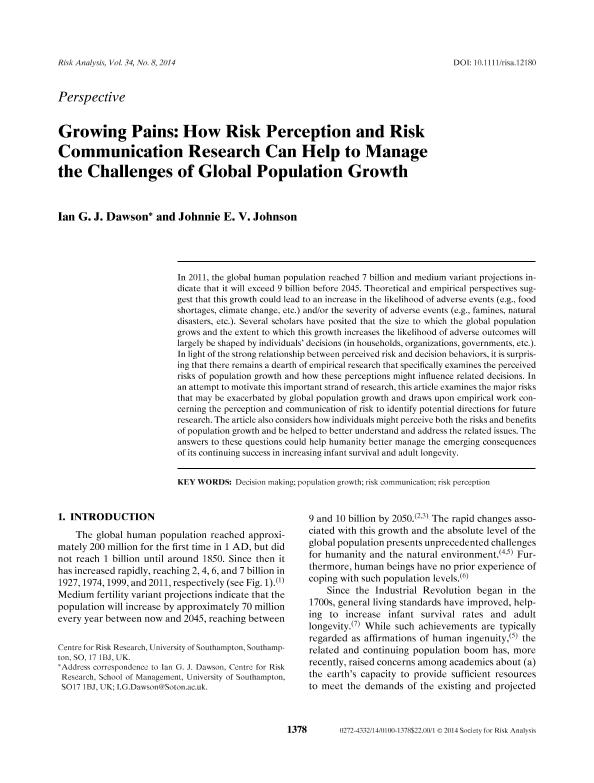Growing pains : how risk perception and risk communication research can help to manage the challenges of global population growth

Contenido multimedia no disponible por derechos de autor o por acceso restringido. Contacte con la institución para más información.
| Tag | 1 | 2 | Valor |
|---|---|---|---|
| LDR | 00000cab a2200000 4500 | ||
| 001 | MAP20140034680 | ||
| 003 | MAP | ||
| 005 | 20141016131119.0 | ||
| 008 | 141001e20140804esp|||p |0|||b|spa d | ||
| 040 | $aMAP$bspa$dMAP | ||
| 084 | $a921.1 | ||
| 100 | 1 | $0MAPA20130007700$aDawson, Ian G. J. | |
| 245 | 1 | 0 | $aGrowing pains$b: how risk perception and risk communication research can help to manage the challenges of global population growth$cIan G. J. Dawson, Johnnie E. V. Johnson |
| 520 | $aIn 2011, the global human population reached 7 billion and medium variant projections indicate that it will exceed 9 billion before 2045. Theoretical and empirical perspectives suggest that this growth could lead to an increase in the likelihood of adverse events (e.g., food shortages, climate change, etc.) and/or the severity of adverse events (e.g., famines, natural disasters, etc.). Several scholars have posited that the size to which the global population grows and the extent to which this growth increases the likelihood of adverse outcomes will largely be shaped by individuals¿ decisions (in households, organizations, governments, etc.). In light of the strong relationship between perceived risk and decision behaviors, it is surprising that there remains a dearth of empirical research that specifically examines the perceived risks of population growth and how these perceptions might influence related decisions. In an attempt to motivate this important strand of research, this article examines the major risks that may be exacerbated by global population growth and draws upon empirical work concerning the perception and communication of risk to identify potential directions for future research. The article also considers how individuals might perceive both the risks and benefits of population growth and be helped to better understand and address the related issues. The answers to these questions could help humanity better manage the emerging consequences of its continuing success in increasing infant survival and adult longevity. | ||
| 650 | 4 | $0MAPA20080610050$aCrecimiento demográfico | |
| 650 | 4 | $0MAPA20080602871$aPercepción del riesgo | |
| 650 | 4 | $0MAPA20080552183$aPoblación | |
| 650 | 4 | $0MAPA20080553883$aDemografía | |
| 773 | 0 | $wMAP20077000345$tRisk analysis : an international journal$dMcLean, Virginia : Society for Risk Analysis, 1987-2015$x0272-4332$g04/08/2014 Volumen 34 Número 8 - agosto 2014 , p. 1378-1390 |

